Successful expert workshop by Rewilding Oder Delta offers new impulses for restoring dynamic coastal ecosystems. At the invitation of Rewilding Oder Delta e.V., around 35 representatives from public authorities, science, conservation, tourism and land use gathered on the island of Poel and near Kühlungsborn, Germany, for a two-day workshop to develop recommendations for the restoration and protection of sand habitats along the Baltic coast. The focus: balancing conservation and human use while involving local actors from the very beginning – a forward-looking contribution to implementing the EU Nature Restoration Law.
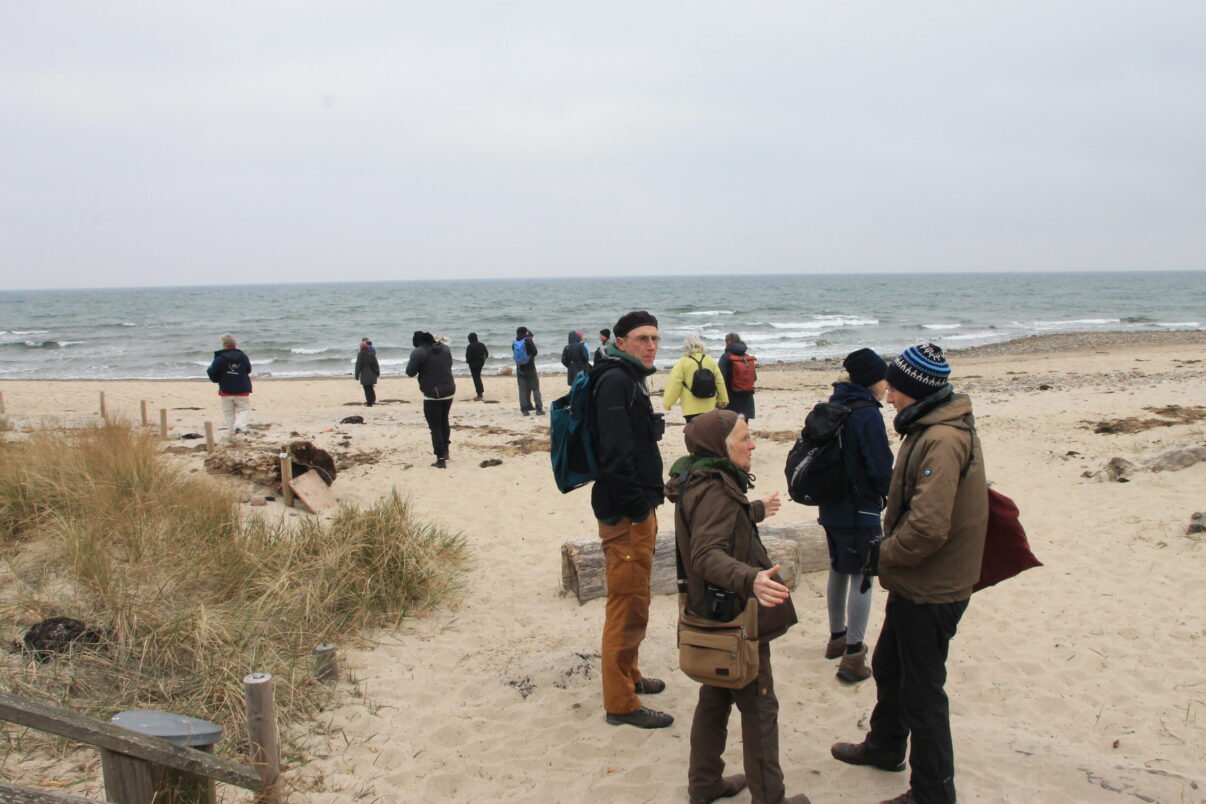
Dynamic habitats of great ecological value
Sand habitats such as beaches, dunes and submerged sandbanks are among the most species-rich, but vulnerable ecosystems along the Baltic Sea. They provide critical space for specialized plants and animals and naturally protect the coast from erosion. However, they are increasingly under pressure – from tourism and climate change alike – making their restoration both essential and challenging.
Experiencing nature: excursion to the Riedensee
The workshop began with an excursion to the Riedensee Nature Reserve near Kühlungsborn, led by a representative of NABU Mittleres Mecklenburg. Participants were able to get a first-hand impression of the ecological diversity of the area: tiny insects and crustaceans living in burrows in the ground; highly specialised plants that have to cope with the dynamics of wind and waves; endangered seabird species that lay their eggs well camouflaged in the sand – nature here often only reveals itself at second glance. This makes it vulnerable to damage and trampling, e.g. by beach walkers and, later in the year, bathers. This fragile coexistence of beach, dunes, brackish water reeds and beach lakes not only attracts a diverse bird life, but even otters are guests here.
A highlight: the concept of “beach islands” – temporary protection zones set up during the bird breeding season. Within just a few months, native vegetation can regenerate, offering safe breeding grounds for rare species such as the ringed plover.
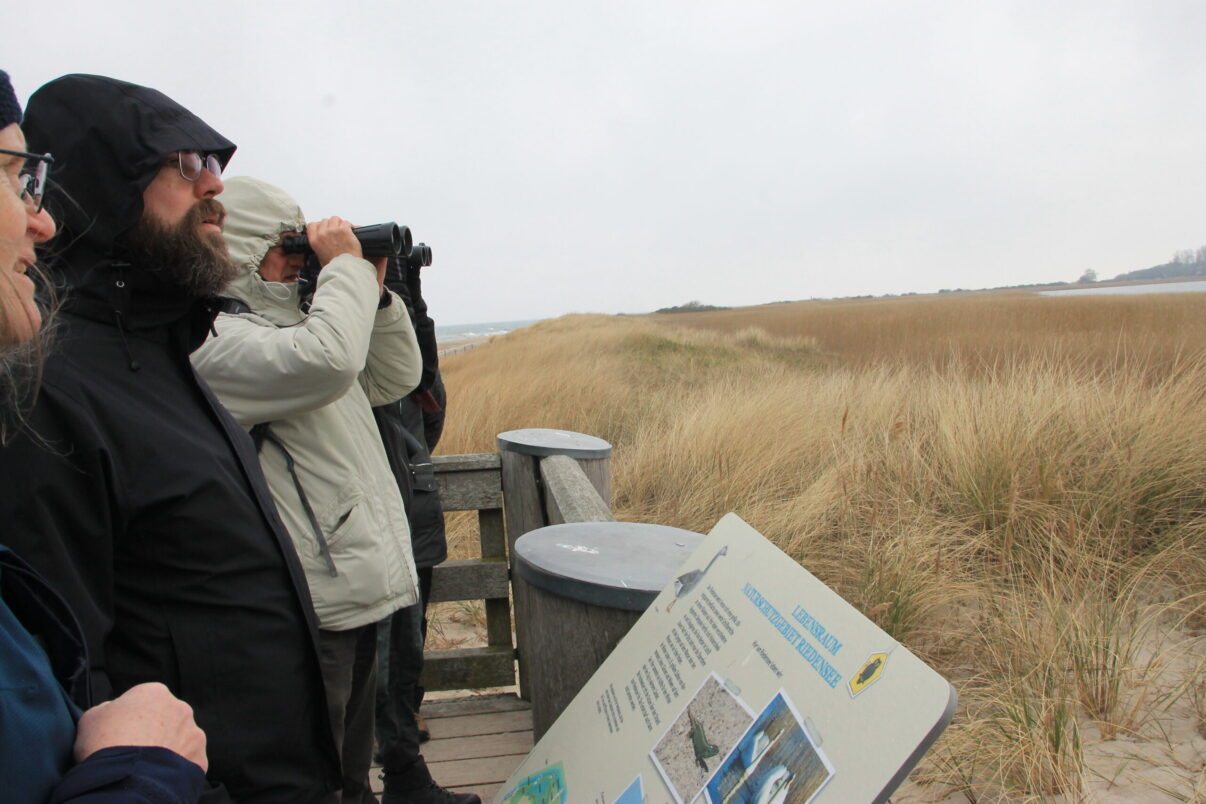
Science meets practice
The second day of the workshop focused on specialist presentations and discussions. The topics ranged from beaches used for tourism with dune plants worthy of protection and rare and/or endangered seabirds to marine sand habitats such as constantly flooded sandbanks. The presentations showed how protection, restoration and use can be reconciled – with positive examples from various regions.
The potential of community involvement in dune protection was also emphasized – as a simple, but powerful tool to foster the understanding and long-term acceptance of conservation efforts.
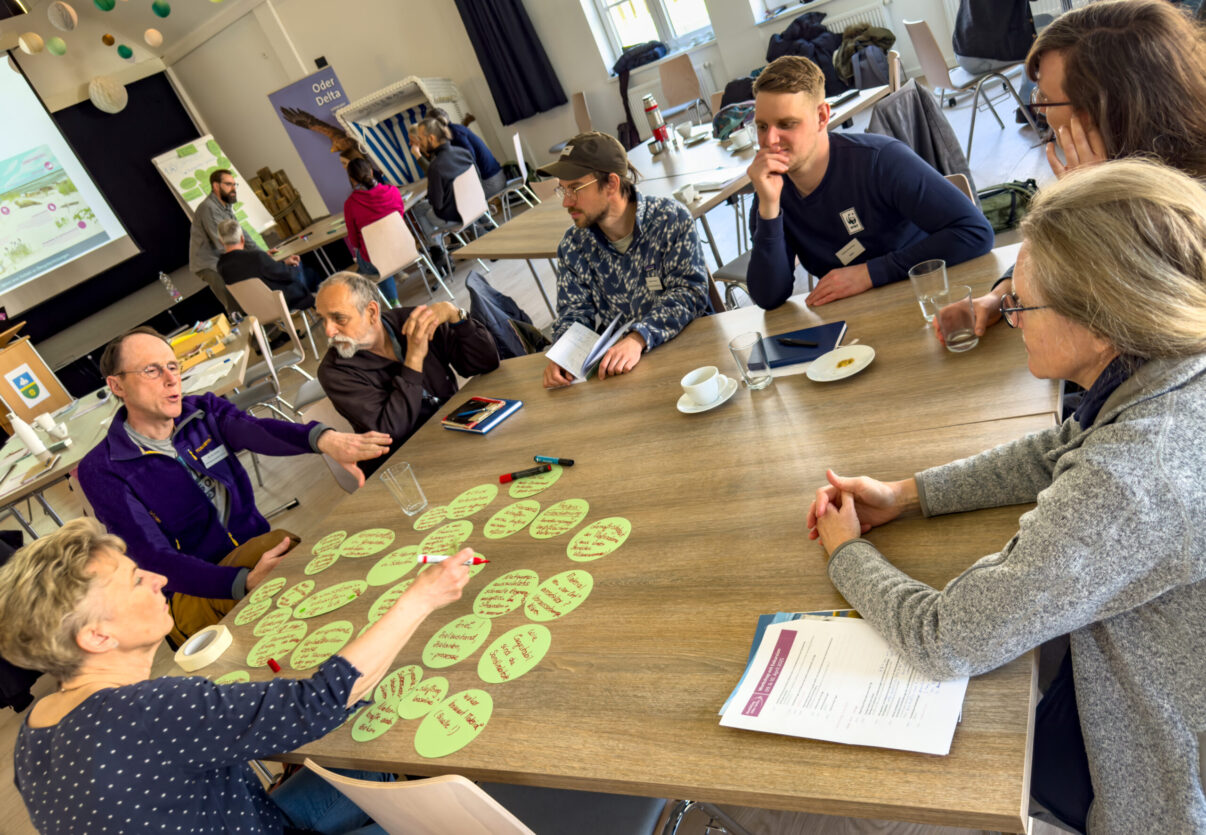
Planning together from the start – for lasting success
“Passive measures like beach islands are simple to implement, effective, and enjoy broad support – especially when co-designed with locals and visitors,” said Ulrich Stöcker, Managing Director of Rewilding Oder Delta e.V.
“Active restoration efforts, such as volunteer dune care, also offer great potential to make coastal habitats more resilient to the impacts of climate change and tourism.”
The workshop generated concrete recommendations for coastal restoration – with relevance for national and EU-wide action under the new EU Nature Restoration Regulation.
Fact sheet
As part of the workshop, Rewilding Oder Delta e.V. created a compact fact sheet about sand habitats, their restoration and their benefits. It summarizes the most important aspects in a clear manner.
Furthermore, the results of the workshop will be incorporated into the development of recommendations for action for the restoration of these and similar habitats in and around the Baltic Sea. These concrete recommendations for action provide decision-makers, practitioners and interested parties with a basis for successful planning and initial steps towards the implementation of restoration measures and protective measures such as the creation of beach islands.
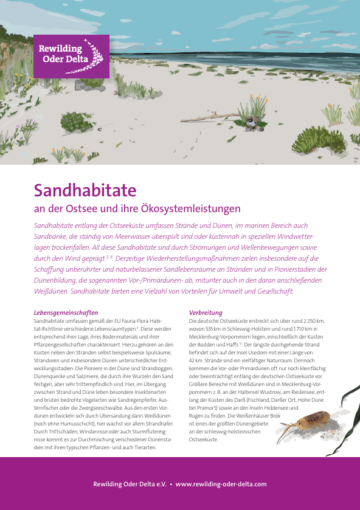
Hintergrund zum Projekt
The workshop is part of the project ‘Benefits of restoring marine ecosystems and their services in the German Baltic Sea’, which is funded by the Federal Agency for Nature Conservation (BfN) with funds from the Federal Ministry for the Environment, Climate Action, Nature Conservation and Nuclear Safety (BMUKN). The aim is to incorporate the expertise of a wide range of interest groups into the planning of renaturation measures and to highlight the ecological and economic value of these habitats. The public project closing conference will take place from 22 to 24 September 2025 at the Ozeaneum in Stralsund. More information can be found here.
Rewilding Oder Delta e.V. is committed to restoring natural habitats around the Szczecin Lagoon and other parts of the Baltic Sea coast – both on land and at sea. Our association combines practical nature conservation with nature-friendly economics and relies on the active participation of local people to create a vibrant, resilient Baltic Sea ecosystem.
The interactive workshop on sand habitats is the third in a series of four workshops on the four most important ecosystems in and around the German Baltic Sea (salt marshes, stone reefs and seagrass meadows).
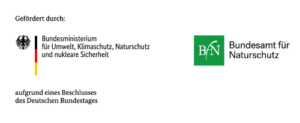
Text: Ulrike Frenzel, Katrin Wollny-Goerke, Laura Meinecke
Editor: Ulrike Frenzel